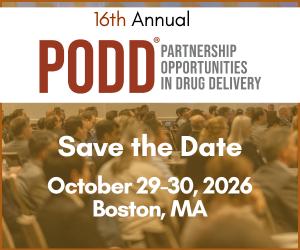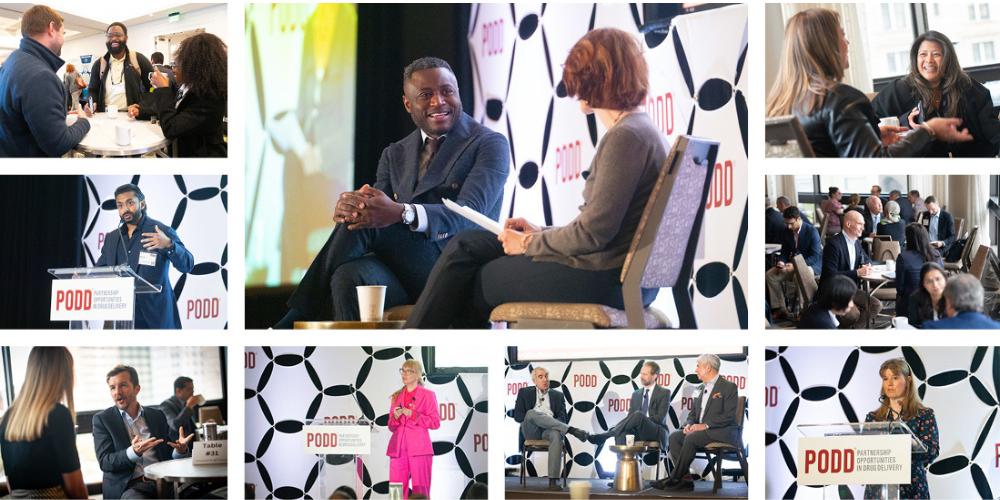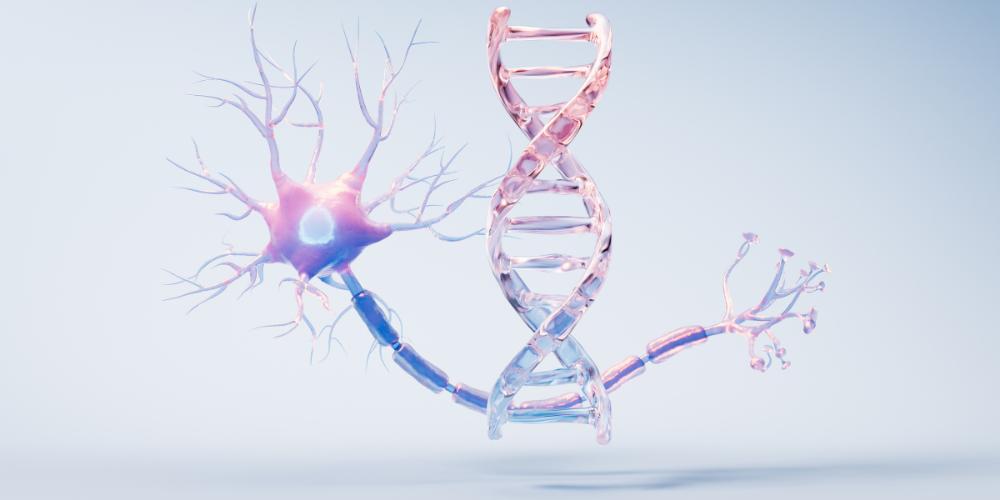
Manuel Sanchez-Felix, PhD, is a Senior Fellow with the Chemical and Pharmaceutical Profiling (CPP) group at the Novartis Institutes for BioMedical Research in Cambridge, MA.
What is your role at Novartis?
My specific role is in leading novel drug delivery, helping internal scientists connect with external scientists. I’m part of the development organization, specifically formulation. I reside though at the discovery site, so it’s very much looking towards the discovery organization, although I do support some of the later phase assets.
And my specific role is working to find external technologies that differentiate from our internal capabilities or meet gaps in terms of drug delivery. It is very much about connecting. I should mention that one of my key lessons and learnings is that nothing at Novartis, and I think this goes for other big companies, works without a molecule. I’m predominantly looking for platforms that help us progress our internal assets.
For someone in a role like yours, how does the search for the right partner begin?
Typically what we go off of is a well-defined problem, around what we need to get that molecule to do and what is the actual challenge. We normally define a reoccurring challenge that is typical of a molecule. Then we form a scientific community who can work together to help evaluate the most relevant technology, and then to appropriately design experiments to assess whether it’s going to work or not work.
We have communities that we helped set up in brain delivery, delivering locally to the GI tract, in the area of novel types of excipient that will enhance solubility, intracellular delivery, etc. Typically, we form these communities and then get them to define the molecules to find the experiments, and then identify the key partners that make the most sense and have the most convincing data.
"It’s an understanding of the constraints of the technology so that we can identify whether we had the right molecule."
What do you see as essential for a successful
collaboration?
There are several things that I’ve seen that make for a very successful collaboration. The first one is honesty: honesty about what your technology can and can’t do. We are scientists; we recognize that we have to go for the scientific method that something won’t always work. It’s an understanding of the constraints of the technology so that we can identify whether we had the right molecule. What we’ve encountered is that it is often not the technology that fails, but the molecule itself fails. It doesn’t have either the potency or doesn’t have the right physicochemical properties.
The second one is a willingness to design experiments that will quickly establish whether something will or won’t work, and adaptability. In other words, to figure out whether we can quickly address those concerns, or whether we have to part ways while the company takes that learning and progresses things in order come back to us once they’ve sorted out the issue or we have the right molecule that fits that criteria.
You’ve spoken about the formulation needs of special patient groups, specifically geriatric and pediatric. What is commonly overlooked when designing for those groups?
An understanding of the burdens that those communities face. Because it’s often not just the patients; it’s the care provider. Someone who looks after those individuals, and has to figure out how to administer these medications to people who, because of their condition, age, illness or cognitive ability, may not necessarily appreciate the fact that those carers are caring for them. That creates a huge burden for both parties.
Are there other specific populations that have a similar untapped potential?
Yes. There are diseases like Lyme’s disease and COVID-19, where sometimes patients don’t realize how ill they are or create brain fog. If you look at many diseases, there is a cognitive effect. I don’t think that there is a full understanding when a patient is ill, they may be severely compromised, and their cognitive abilities may be very compromised, including their ability to rationally think about their disease or the treatment.
If you look at that cognitive ability and ability to do things, there is a huge problem across the whole multitude of diseases, anything to do with inflammation, anything to do with neurodegenerative diseases such Parkinson’s or Alzheimer’s, anything to do with depression or schizophrenia, and even with some of the people surviving COVID who have this brain fog.
The other problem is we seem to ignore the fact that up to 20% of our population in the US and in other countries have disabilities. We obviously have young people and elderly people, but we have a group of people with disabilities, be they cognitive or physical. That is a huge group of people who we don’t seem to recognize. And they have their own challenges with treatment.
Could you see long-acting therapies or connected devices benefiting those patients?
There’s a common belief in the industry that a once-a-day tablet is what people want. I severely question that. I’ve seen data that doesn’t support that. And I’ve seen data from some of the companies that are coming to PODD and presenting very convincing data and looking at very new avenues of oral, weekly or monthly, which are very exciting. The challenge will be convincing people to do something different and change their whole manufacturing. I’m seeing a lot more publications producing good, very strong business cases.
"We always have to remember that, as formulation scientists, what we’re dealing with are behavioral habits. What we seem to forget is that repetitive habit breaks down when we’re ill."
What would be the challenges in adopting a
model like weekly/monthly dosage?
We always have to remember that, as formulation scientists, what we’re dealing with are behavioral habits. If you look at oral, we exploit the fact that we eat two or three times a day. Consequently, we’re exploiting something that we do as a repetitive habit. What we seem to forget is that that repetitive habit breaks down on or becomes difficult or unpleasant when we’re ill.
The other problem that we have is that, whether we like it or not, in order to make medicines affordable, we have to mass-manufacture. We easily make a billion units just for clinical trials every year at Novartis. So that requires us to have platforms, which I referred to previously, which means that we have to have systems in place that allow us to be productive.
And what we must recognize is for a company to be successful, it has to be able to deliver on its commitments of high-quality products. We have this dichotomy where we’ve got all these historical manufacturing processes and everything in place. And we got people who are trained in those, so it’s sometimes very difficult to let go of those things in transition to new opportunities without a very strong business case and scientific case.
What do you see as the next phase of drug delivery? And what do you see as the trends impacting that?
Differentiation, and what I mean by that is providing things that the patient and the payors really want. Historically, we were in a culture producing something that’s safe and worked, but not necessarily differentiated. The good news is that it is no longer tolerated by society. Everything has shifted to provide us with some value. Information is much more transparent to the patient and to the payors. They’re demanding more, which is really good.
We’ve gone from a culture of “Can we make it?” to one of “Should we make it?” If you actually look at the numbers, like the PharmaCircle presentation at last year’s PODD, one of the things that was striking was that there are now 22,000 clinical candidates in discovery and development, which is up from over 10,000 from about 10 years ago. What that means is that there’s intense competition. Across all drug indications, it’s not uncommon to have 10 different treatments. Maybe they are different mechanisms, but there’s intense competition.
So the good thing is that this is doing a great deal of good for the patient. The bad thing is that you really have to differentiate. This is the opportunity and the curse on the drug delivery community: can you help differentiate products and make them better than the standard formulation?
What are you excited about in the near future of drug delivery?
We’ve obviously seen the huge transformation of the mRNA technology, which is a new drug delivery process. We’ve seen some of the new exciting technologies, such as long-acting. We’re seeing huge transitions from IV to subcu, which is also adding greater convenience and reducing burden. We’re seeing huge advances in devices, making them much more compliant. I’m excited to see what the community brings forward. I’m also seeing that big and small companies are collaborating more than that, to better define what we consider as differentiation and what the problem statements are.
In publications, I’m also seeing much stronger
business cases, providing something that describes a
patient outcome or consequences of doing something
with this new formulation. Rather than stating, “It’s
novel and it’s new,” I’m seeing people saying, “These
are the benefits it is giving patients.” I encourage that
and would like to see more of that as well.








